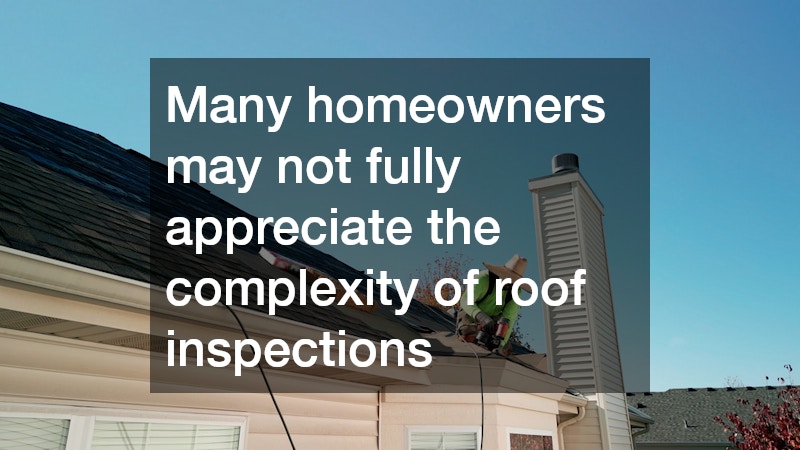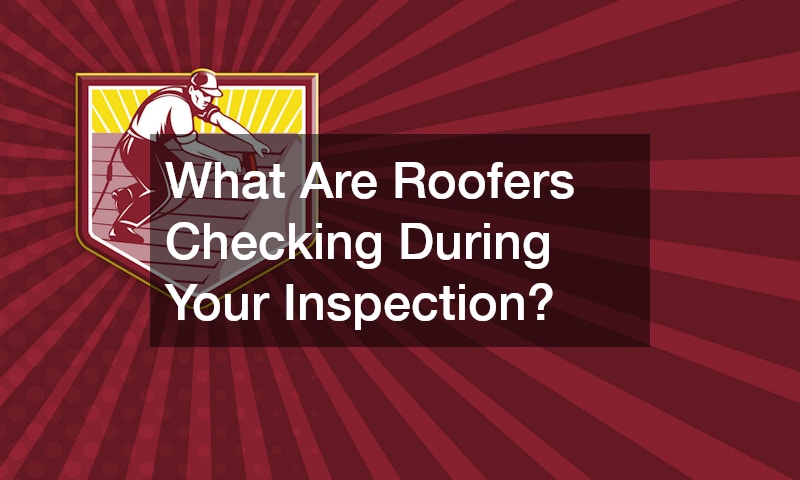Roof inspections are a vital part of maintaining the integrity of your home. Professional roofing companies conduct these inspections to ensure that your roof is in optimal condition. During a roof inspection, roofers will look for potential problems that could lead to costly repairs if left unchecked.
These inspections are not just about identifying existing damage, but they are also preventive measures. Understanding what roofers are checking can give you peace of mind and help you catch issues early.
Many homeowners may not fully appreciate the complexity of roof inspections. Roofers have a trained eye to detect problems that are not immediately visible to the untrained eye. Regular inspections by reputable roofing companies can save you from expensive repairs down the line. Additionally, these inspections help in prolonging the life of your roof. In this article, we will explore the key elements that roofing professionals check during an inspection.
The roof over your head plays a critical role in protecting your home from the elements. It is subjected to harsh weather conditions and thus requires regular maintenance. Roofing companies in the industry recommend periodic inspections to ensure your roof is in perfect working order. This proactive approach helps in identifying minor issues before they become major problems. Let’s delve into the specific areas that roofers examine during your roof’s inspection.
Checking the Shingles and Tiles
One of the primary things that roofers check during an inspection is the condition of the shingles or tiles. They look for missing, cracked, or curling shingles that could lead to leaks or water damage. Often, the signs are subtle but can indicate underlying issues such as fungal growth or structural damage. For homes with tiled roofs, cracked or broken tiles can expose underlayment and compromise the roof’s functionality. Professional roofing companies can often address these issues swiftly, preventing further damage.
The integrity of the shingles or tiles is crucial because they act as the first line of defense against weather elements. Damaged shingles might not only let water in but can also affect the insulation of your home. During an inspection, roofers pay special attention to shingle granules loss, a sign that the shingles are wearing out. Roofers recommend replacing damaged shingles as soon as possible to prevent moisture infiltration. Their expertise ensures that your roof remains durable and effective in its role.
Roofing companies often use advanced techniques and tools to inspect the shingles thoroughly. They might use infrared technology to detect moisture under the shingles or drones to get a better view of hard-to-reach areas. If they identify areas of concern, they will provide a detailed report with recommendations for repair or replacement. Timely action based on professional advice can save homeowners from expensive repairs. Your roof deserves this level of detailed attention, which professional roofers consistently provide.
Examining the Flashing
Flashing is another critical component that roofers meticulously examine during an inspection. This material is used to seal joints and prevent water leakage in areas like chimneys, vents, and skylights. Over time, flashing can corrode, crack, or warp, compromising its efficiency. Professional roofers check these seals to ensure they remain watertight. Faulty flashing can lead to serious water damage and should be repaired immediately upon discovery.
The importance of flashing is often underestimated by homeowners, but roofing companies understand its role in maintaining a water-tight barrier. Without proper flashing, even the smallest gaps can allow water to seep into your home. Professionals also check if the flashing has been correctly installed, as improper installation can lead to failures. They might also assess the need for newer materials or replacement to enhance the durability of the roof. It’s a small yet significant part of the inspection process that can prevent bigger issues.
Roofers might recommend regular maintenance of flashing, especially in areas prone to high rainfall or snowfall. During inspections, they look for signs of wear and prioritize fixing these areas as soon as possible. A well-maintained flashing system is integral for a roof’s longevity and efficiency. Roofing companies typically offer maintenance services post-inspection to address these issues. With proper care, flashing can effectively protect your home for years to come.
Gutter and Drainage Assessment
The condition of your gutters and drainage system is another focus area during a roof inspection. Roofers check for clogs, leaks, and sagging sections that could impede proper drainage. A compromised drainage system can lead to water buildup on the roof, which can cause leaks or structural damage over time. Roofing companies often provide cleaning and repair services for gutters as part of their inspection offerings. Regular checks are essential to ensure the longevity and functionality of your roofing system.
Proper drainage is vital in protecting your home’s foundation and exterior. Inefficient gutters can lead to soil erosion around the house, which can affect the foundation and seep into basements. Inspectors pay close attention to downspouts ensuring they direct water away from the house. They may also suggest gutter guards for homes in heavily wooded areas to minimize leaf accumulation and blockage. Understanding these processes ensures that homeowners maintain effective water drainage systems year-round.
Advanced inspection techniques can help identify blockages that aren’t visible initially. Professional roofers use tools to check the slope of the gutters and the alignment of downspouts. Small adjustments can greatly enhance the efficiency of water flow, reducing risks to your home. Roofing companies can provide detailed plans for repairs or adjustments to maintain optimal gutter performance. Ensuring your gutters are in good working order can prevent costly repairs and maintain your roof’s integrity.
Inspecting Attic Ventilation
Attic ventilation plays a significant role in keeping your roofing system healthy, and roofers verify its effectiveness during inspections. Proper ventilation regulates temperature and moisture levels in the attic, preventing mold growth and structural damage. This process involves checking for blockages in vents and ensuring that they facilitate proper airflow. Efficient ventilation can also reduce energy costs by improving the home’s overall efficiency. Roofing companies assess the attic space to provide solutions that will optimize airflow and ultimately contribute to the roof’s longevity.
Improper attic ventilation can lead to heat buildup during summer and ice dams in winter. Both can result in damage to the roof and increased energy bills. Roofers suggest ventilation improvements if necessary, such as adding ridge vents or exhaust fans. These interventions enhance the property’s energy performance while safeguarding the roof structure. Proper attic ventilation can extend the life of your roof significantly, making it a critical focal point during inspections.
Ensuring good airflow can also protect other attic-installed systems such as HVAC units and storage spaces. Roofing companies offer diagnostics that indicate how efficiently your current ventilation is operating. They provide actionable recommendations that improve your house’s ventilation system, leveraging modern technology and materials. Following expert advice on attic ventilation can save you both time and money in the long run. Inspections focused on improving efficiency benefit both homeowners and the lifespan of the roof itself.




